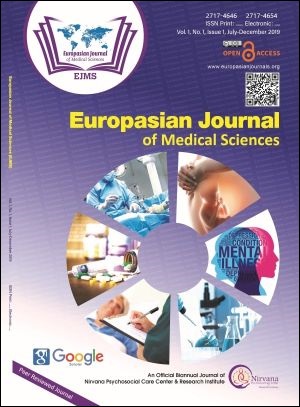Thrombocytopenia as a Predictor of Severity of Pneumonia in a Tertiary Care Center in Nepal
Keywords:
Nepal, Platelet Count, Pneumonia, thrombocytopeniaAbstract
Introduction: Community-acquired pneumonia is an infectious disease with a global burden. Thrombocytopenia can be an effective and inexpensive tool in predicting the severity of pneumonia which can be useful in the primary care level. The objectives were to identify the clinical and laboratory predictors of hospitalized patients with pneumonia, determine the incidence of thrombocytopenia in those patients, its association with severity, compare it with leucocyte count, assess severity using clinical prediction scores, need of mechanical ventilation, need of transfer to intensive care unit and mortality.
Methods: This was a prospective observational study conducted at Tribhuvan University Teaching Hospital, Kathmandu, Nepal with a sample size of 111. After informed consent, diagnosed and admitted cases of community-acquired pneumonia were examined after which patients’ demographic and clinical data, as well as laboratory parameters including white cell count and platelets, were filled in proforma. Clinical prediction scores for pneumonia were calculated and the need for mechanical ventilation, inotropes, transfusions as well as mortality assessed. Patients were followed up until discharge to see the severity of pneumonia.
Results: The incidence of thrombocytopenia among patients with pneumonia was 36.9% (41 out of 111). The overall mortality rate was 9%. More pneumonia patients having thrombocytopenia (14.6%) died than pneumonia patients having leukocytosis (13.8%). There was a significant association between thrombocytopenia and severity of pneumonia, both alone, (p = 0.007, OR = 4.03) and on adjusting for the WBC and GCS (p=0.017, OR=3.81). Significant associations were found between thrombocytopenia and the need for ICU in patients with pneumonia (p=0.001), mechanical ventilation (p = 0.001), presence of edema, confusion, age variation (p=0.024) and septic shock (p=0.021).
Conclusions: Thrombocytopenia is associated with severity in patients hospitalized with community-acquired pneumonia. Thrombocytopenia is an effective predictor of the severity of pneumonia.
Downloads
Downloads
Published
How to Cite
Issue
Section
License
All articles published in EJMS are licensed under the Creative Commons Attribution 4.0 International License (CC-BY 4.0). The author(s) as the copyright holder will retain the ownership of the copyrights without any restrictions for their content under the CC-BY 4.0 license, and allow others to copy, use, print, share, modify, and distribute the content of the article even in commercial purpose as long as the original authors and the journal are properly cited. No permission is required from the author/s or the publishers. Appropriate attribution can be provided by simply citing the original article.
On behalf of all the authors, the corresponding author is responsible for completing and returning the agreement form to the editorial office. More information about the terms and conditions, privacy policies, and copyrights can be found on the webpage of the Creative Commons license privacy policy. https://creativecommons.org/licenses/by/4.0/

